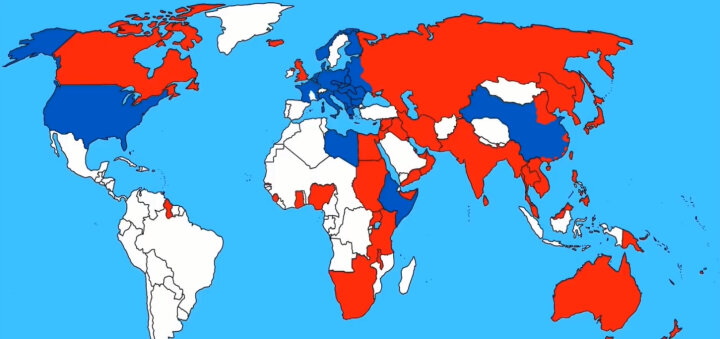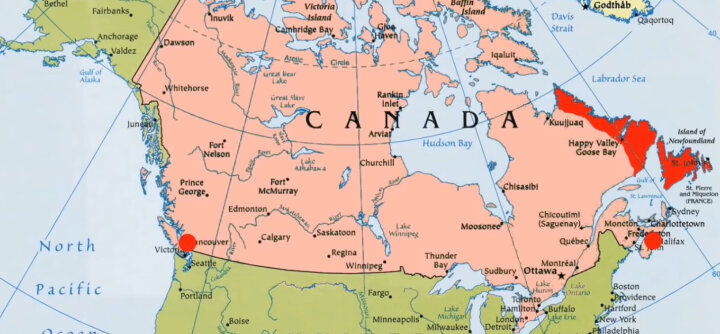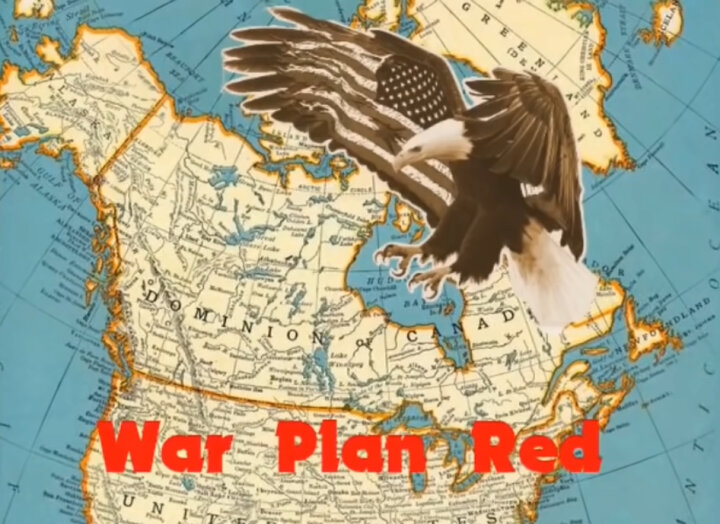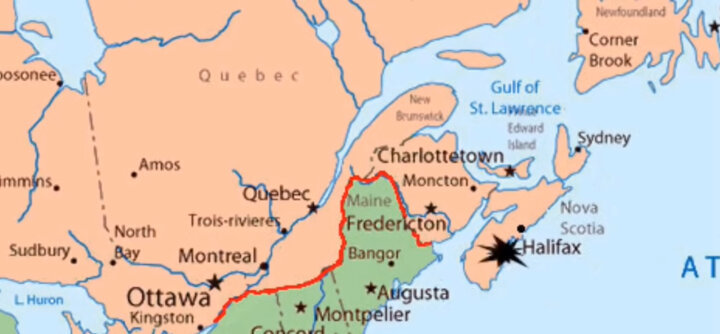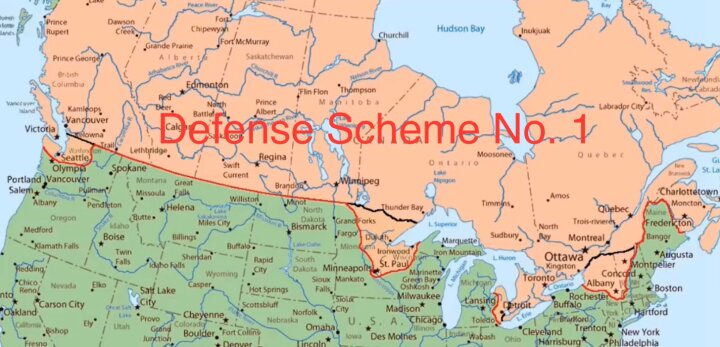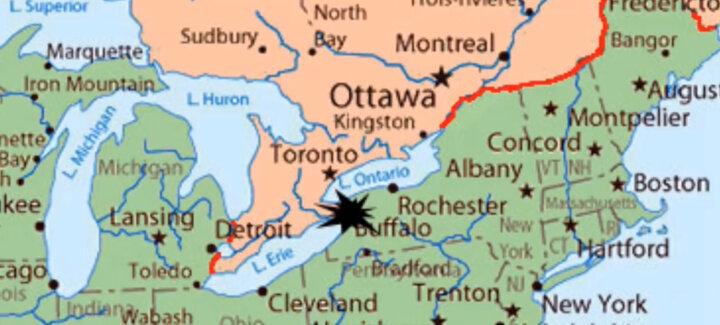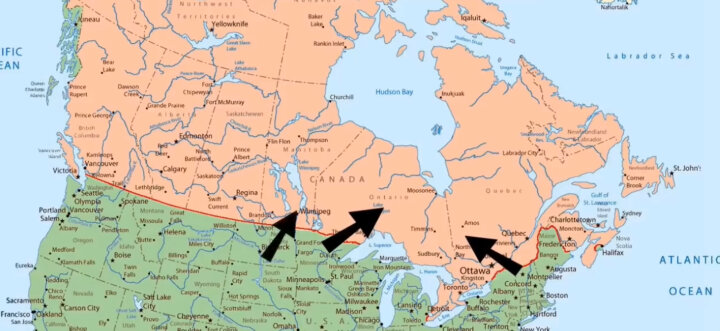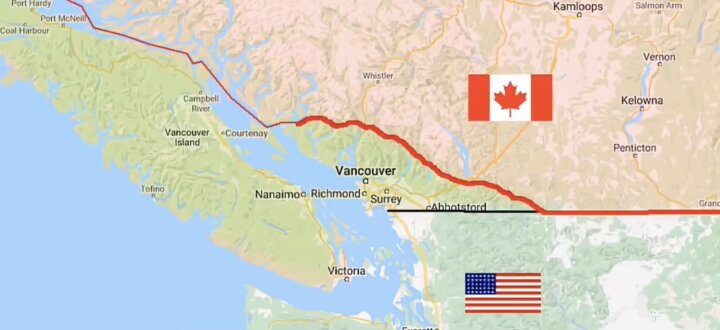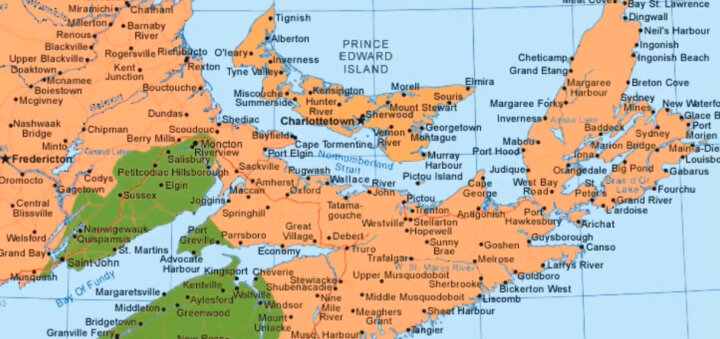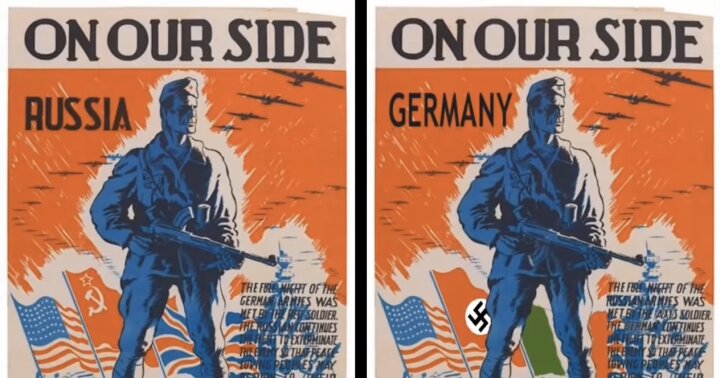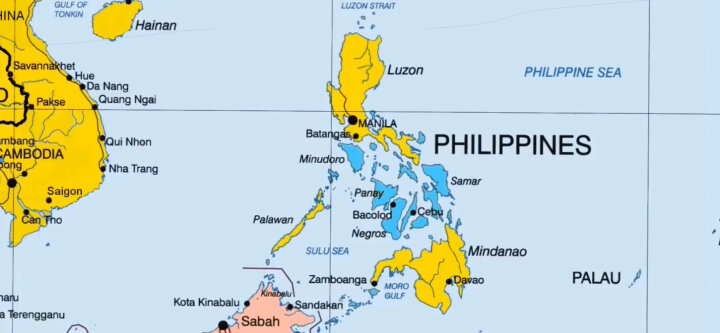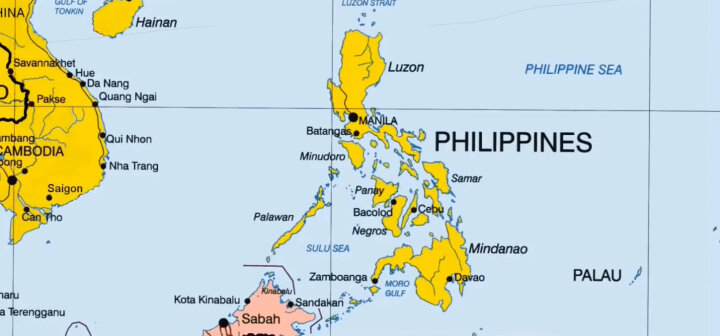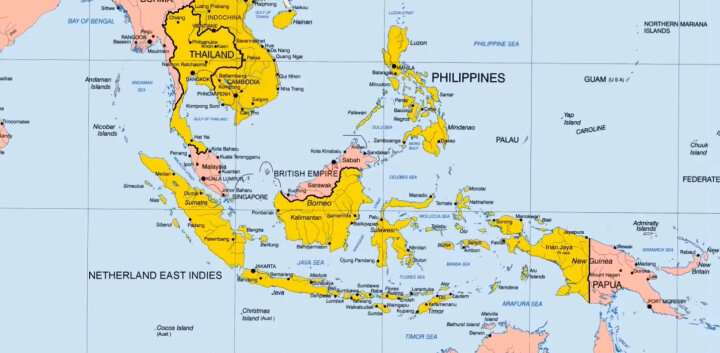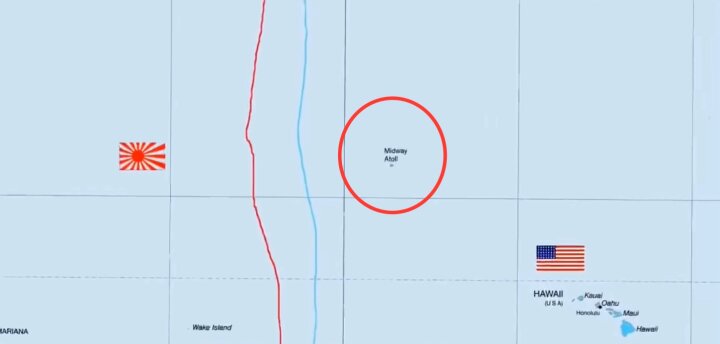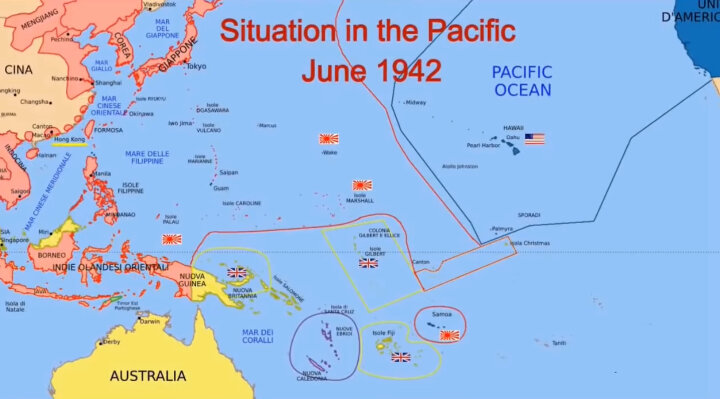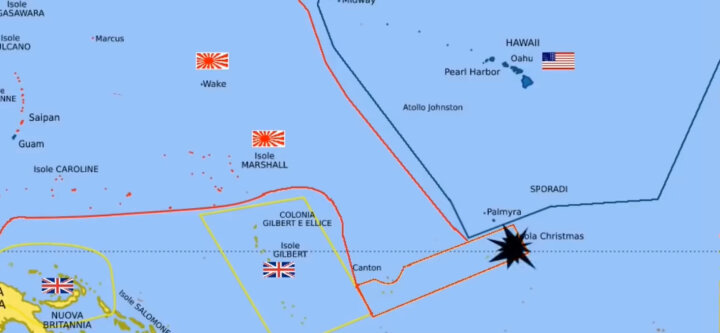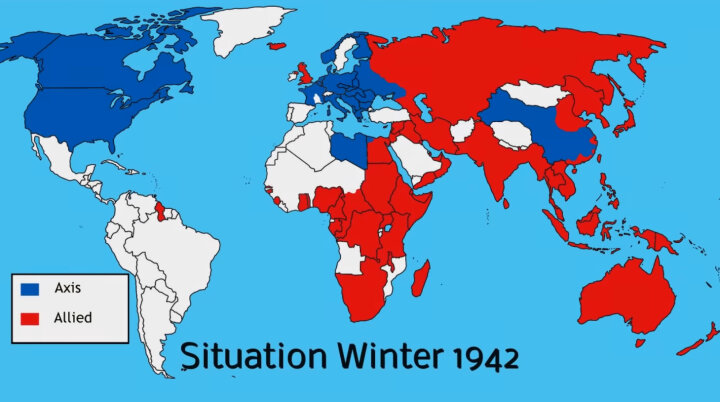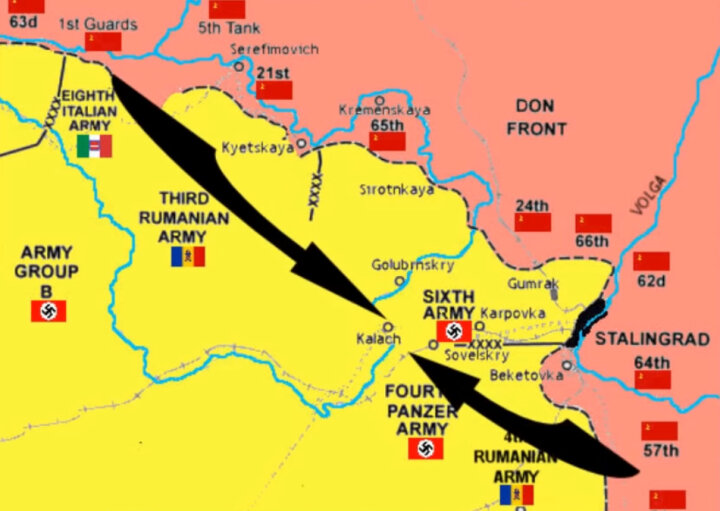What if the US joined the Axis in World War II? 1942
Follow-up to this post:
https://similarworlds.com/news/world-war/5037835-What-if-the-US-joined-the-Axis-in-World-War-II-1939-1941
If you're behind, check it out if you want to see what leads up to the series of events detailed in this post.
January 1
Near Iceland, the destroyer USS Reuben James is torpedoed by a Japanese submarine based in Scapa Flow, Scotland, killing more than 100 sailors. Tensions heighten between the US and UK as a result. The British offer apologies to the American government.
January 11
American B-25's sink a Japanese oil tanker in British waters near Nassau, Bahamas.
February 5
Roosevelt promises aid to "all the enemies of Japan," asking Congress to sell materials to Germany and Italy, although without lend-lease. In response, Hitler and Mussolini make overtures to the US government. U-boat campaigns in the Atlantic are limited. Only British and Japanese ships in British waters are attacked.
February 9
British Navy force an American convoy directed to Sweden to go back.
February 20
In an event that goes down in history as the Phoenix Convoy incident, a Japanese destroyer who was escorting a British convoy east of the Gilbert Islands is sunk by a US naval force including the USS Phoenix. The British merchant ships, after its passengers are allowed thirty minutes to board lifeboats, are sunk.
February 22
Great Britain declares war on USA. The World War starts now.
Immediately, there are the first clashes in the Atlantic between the US and Royal Navy. Swordfish aircraft from HMS Furious sink two American destroyers near Newfoundland. USS Roper sinks a British submarine.
Despite some British believing it's time to recolonize, Churchill declared war on the US only because he thinks it's inevitable. Britain can't allow a gigantic flow of US supplies, weapons and oil to arrive in Europe and better to fight the US now when their military has not reached its full potential. Churchill hopes that the war will result in a long stalemate, making war unpopular in the United States, followed by a negotiated peace. Australia and South Africa announce that they will continue to fight at the British side, although they will not officially declare war on the US. Riots erupt in India as the UK's war with the USA brings hope for their long-desired independence. Canada immediately declares its neutrality in this war.
Hitler and Mussolini are pleased for the USA's entry into the war. Hitler does not take the idea of having America as an ally too seriously, but apart from the stop of the lend-lease, he hopes that the US will distract the important British forces away from Europe.
February 25
In an attempt to establish a sense of trust with Canada, the USA asks to occupy the ports of Hallifax, Vancouver and Newfoundland until the war ends, but Canada cannot permit such a request. With their refusal, the US determines that due to its ties to the British, Canada simply cannot be trusted.
February 27
The US Invasion of Canada begins. The Americans follow a plan called War Plan Red.
The first US Army forces land at St. Margarets Bay, then assaults the port of Hallifax.
The Canadians have a defense plan, Defense Scheme No. 1: they plan to rapidly occupy Seattle, Minneapolis, Detroit and Albany. Though they have no intention of holding the cities for long, the idea is to divert American troops away from Canada long enough for the British to arrive with reinforcements.
This plan fails almost immediately or rather, it doesn't start at all, once it becomes clear the reinforcements from Britain will never arrive, apart from two squadrons of Hurricanes. Britain knows it's impossible to defend Canada against the much stronger United States and they have other more urgent problems, like Germany breathing down their necks. The British Army is not the Red Army, their resources and manpower are limited. Canada is on its own.
February 28-March 3
The Canadian power plants near Niagara Falls, held by the Royal Canadian Regiment, are taken after a bloody battle of three days.
This is followed by an invasion on three fronts. From Vermont, to take Montreal and Quebec, from the Midwest to capture the strategic nickel mines of Ontario, and from North Dakota to seize Winnipeg.
Vancouver is easily taken. It denies Britain and Japan a naval base and cuts Canada off from the Pacific Ocean.
March 11
In the Pacific, the Japanese land on Mindanao. That same day, part of the British Navy leaves the Mediterranean to fight in the new Atlantic Front. Royal Navy aircraft carriers Hermes, Penelope, Repulse and the Battleship Prince of Wales are deployed in the Far East, but far from the war zones. In the Western North Atlantic, the American Navy tries to block British-Canadian traffic, but they do not attempt to openly face the British fleet, nor, for the moment, send soldiers or materials into Europe. The Royal Navy is still the strongest navy in the world.
March 13
Winnipeg is taken.
March 17
Despite some initial success by the Americans, the invasion of Canada is repelled for now. The US Army fails to take Hallifax. They only occupy New Brunswick, cutting Nova Scotia off from the rest of Canada at the railway junction in Moncton. The US Army is stopped at the gates of Montreal and Toronto. Canadians are experienced military, better-armed and can take more advantage of their terrain. One might see parallels with the Soviet-Finland Winter War.
The US is not ready for war in 1942. Obsolete equipment, poor training and lack of experienced officers. Very few saw combat of any kind. The US has no real tank force. Their primary tank is the M3 Lee, a tank with a very limited 75 mm gun, smooth tracks and an impractical high profile. It can be knocked out almost anywhere on any kind of terrain. The B-24 is yet in service but with low numbers and there are the B-17's. The USAAF's best fighters are the P-40 Warhawks and the P-39 Airacobra. The P-38 is already operational. The US Navy's battleships were never tested in war, except for their diving ability at Pearl Harbor.
April 4
On the Eastern Front in Europe, the Soviet Winter counter-offensive pushes the freezing German Army back 100 km from Moscow. The front stabilizes. The Siege of Leningrad continues.
April 10
There are the first US collaborations with the Germans. Ribbentrop flies to DC to sign the Washington Pact. The US are now officially part of the Axis. US public opinion is unsure about an alliance with Germany at first. It's difficult to ignore the stark differences between American democracy and Nazi totalitarianism. But ultimately, Americans accept to fight at Hitler's side in much the same way they accepted to fight with Stalin in our timeline.
Propaganda posters depict the Great Seal of the US and the Insignia of Nazi Germany, reading "EAGLES FLY TOGETHER" and "Our differences are many, but our cause is one."
April 31
McArthur evacuates the Philippines.
May 2
Japanese land forces invade Indonesia, fearing similar action by the Americans. The Dutch government in exile at London can't do anything. There are weak protests from London. The Dutch are allowed to continue to administer Indonesia. The Dutch East Indies alleviate part of the oil problem to the Japanese Navy.
May 4-8
Japanese forces under Admiral Shima make unopposed landings on Samoa, opening the Battle of the South Pacific. The first battle in which aircraft carriers engage each other. The US sinks the Japanese light carrier Shoho. The US lose their fleet carrier Lexington and the Yorktown is damaged.
June 3
Japan begins the invasion of the Aleutian Islands. Japanese midget subs based in the Canadian port Prince Rupert sink a support ship in Alaska.
June 4-7
The Imperial Navy try another blow, planning to take Midway in a rush before American reinforcements could arrive. Admiral Nagumo orders the aircraft to attack Midway. The Battle of Midway opens, occurring in almost the same way it does in our timeline. The British do not participate in this battle nor generally to the Japanese effort in the Pacific because they do not want to help Japan build their own empire in Asia. However, due to the absence of a British threat, things go slightly better for the Japanese. Only the carriers Kaga, Hiryū and Sōryū are sunk while the Japanese are able to sink the Yorktown as well as the Hornet.
The Battle of Midway comes to a close. Nagumo cancels the Midway invasion. Again, the Japanese are not able to inflict a decisive defeat to the US Navy, but such a war will not be decided by one decisive battle as the Japanese hope. The Japanese lost three carriers they can't replace and almost as critical is the loss of its experienced aircrews. Their training program is inadequate due to the chronical fuel problems. Conversely, the loss of carrier is not a tragedy for the USA. There are 24 Essex class carrier under production and the US will have about 100 carrier of various sizes by 1945. However, this battle gives the Japanese free reign in the Pacific for six months.
June 10-13
British Navy bombs the US coastal bases Portland, Boston, Norfolk, Savannah and Charleston
June 19
In the largest land battle to take place on American soil throughout the war, Operation Jubilee, a raid by British and Canadian forces with 20 Mk IV Churchill Tanks on Portland, Maine ends in disaster. They come under heavy gunfire and most are killed or captured by the American defenders. British bombers Short S-29 Stirlings based in Toronto bomb the US industrial Midwest: Detroit, Pittsburgh and Chicago. The Allies try to inflict as much damage as possible to the US industrial forces, but this would require constant and heavy attacks. In our timeline, it took years of bombing to put down the German industry, which was only a quarter of the American industry. The British attacks are pin-pricks.
June 21
In Africa, the British Army in Egypt is weakened since Australians and Canadians have returned home. With the ongoing unrest in India, Indian troops are now unreliable and after the redeployment of the British fleet in the Atlantic, the Italians have better supply forces. Rommel is ready for a new offensive. He turns his troops to Gazala and destroys the British 1st and 7th Armored Divisions.
June 29
Mersa Matruh, 150 km from Alexandria, falls to the Axis.
July 19
On the Canadian front, Montreal is lost to the US. Canada has fought bravely, but they can't hope to stand against America for much longer. USA has vastly more men, tanks and aircraft, and the means to make more quickly. The US now has around 2 million men for the invasion. The Canadians can muster 400,000 men, some very experienced units, but only 24 tanks. Most military equipment coming from England is intercepted by American naval patrols. Canadian manufacturing is heavily crippled in this war as most of the industry is within 100 km of the US border.
August 16-19
Ottawa and Toronto are taken, then Halifax, not long after.
September 2
Canada surrenders. There is partisan resistance that continues for some time in the far north.
October 1
US marines land on Christmas Island.
The Japanese defenders are overwhelmed. The Japanese make several attempts until December to retake the island, but the landing Japanese forces are always driven back. By January, after five naval battles and almost daily aerial battles and naval bombardments, the Japanese abandon their efforts to retake the island.
Despite being ill-prepared for war at first, The US is striking back.
In Africa, the Axis tries to break the British resistance at El Alamein. In China, Japanese forces have large successes south of Shanghai. But the bloodiest front is the European Eastern Front.
October 17
The Battle of Stalingrad begins when the 6th Army and elements of the 4th Panzer Army reach the city. Zhukov is the commander of the Stalingrad defenses. The battle quickly degenerates into house-to-house fighting.
November 19
The Red Army launches Operation Uranus, a two-pronged attack targeting the Romanian armies protecting the 6th Army's flanks.
But in this timeline, without the threat to the West and without bombings, the Axis forces are far better equipped, with better reserves and hold the line. Operation Uranus fails. Heavy fighting continues in Stalingrad for another two months.
https://similarworlds.com/news/world-war/5037835-What-if-the-US-joined-the-Axis-in-World-War-II-1939-1941
If you're behind, check it out if you want to see what leads up to the series of events detailed in this post.
January 1
Near Iceland, the destroyer USS Reuben James is torpedoed by a Japanese submarine based in Scapa Flow, Scotland, killing more than 100 sailors. Tensions heighten between the US and UK as a result. The British offer apologies to the American government.
January 11
American B-25's sink a Japanese oil tanker in British waters near Nassau, Bahamas.
February 5
Roosevelt promises aid to "all the enemies of Japan," asking Congress to sell materials to Germany and Italy, although without lend-lease. In response, Hitler and Mussolini make overtures to the US government. U-boat campaigns in the Atlantic are limited. Only British and Japanese ships in British waters are attacked.
February 9
British Navy force an American convoy directed to Sweden to go back.
February 20
In an event that goes down in history as the Phoenix Convoy incident, a Japanese destroyer who was escorting a British convoy east of the Gilbert Islands is sunk by a US naval force including the USS Phoenix. The British merchant ships, after its passengers are allowed thirty minutes to board lifeboats, are sunk.
February 22
Great Britain declares war on USA. The World War starts now.
Immediately, there are the first clashes in the Atlantic between the US and Royal Navy. Swordfish aircraft from HMS Furious sink two American destroyers near Newfoundland. USS Roper sinks a British submarine.
Despite some British believing it's time to recolonize, Churchill declared war on the US only because he thinks it's inevitable. Britain can't allow a gigantic flow of US supplies, weapons and oil to arrive in Europe and better to fight the US now when their military has not reached its full potential. Churchill hopes that the war will result in a long stalemate, making war unpopular in the United States, followed by a negotiated peace. Australia and South Africa announce that they will continue to fight at the British side, although they will not officially declare war on the US. Riots erupt in India as the UK's war with the USA brings hope for their long-desired independence. Canada immediately declares its neutrality in this war.
Hitler and Mussolini are pleased for the USA's entry into the war. Hitler does not take the idea of having America as an ally too seriously, but apart from the stop of the lend-lease, he hopes that the US will distract the important British forces away from Europe.
February 25
In an attempt to establish a sense of trust with Canada, the USA asks to occupy the ports of Hallifax, Vancouver and Newfoundland until the war ends, but Canada cannot permit such a request. With their refusal, the US determines that due to its ties to the British, Canada simply cannot be trusted.
February 27
The US Invasion of Canada begins. The Americans follow a plan called War Plan Red.
The first US Army forces land at St. Margarets Bay, then assaults the port of Hallifax.
The Canadians have a defense plan, Defense Scheme No. 1: they plan to rapidly occupy Seattle, Minneapolis, Detroit and Albany. Though they have no intention of holding the cities for long, the idea is to divert American troops away from Canada long enough for the British to arrive with reinforcements.
This plan fails almost immediately or rather, it doesn't start at all, once it becomes clear the reinforcements from Britain will never arrive, apart from two squadrons of Hurricanes. Britain knows it's impossible to defend Canada against the much stronger United States and they have other more urgent problems, like Germany breathing down their necks. The British Army is not the Red Army, their resources and manpower are limited. Canada is on its own.
February 28-March 3
The Canadian power plants near Niagara Falls, held by the Royal Canadian Regiment, are taken after a bloody battle of three days.
This is followed by an invasion on three fronts. From Vermont, to take Montreal and Quebec, from the Midwest to capture the strategic nickel mines of Ontario, and from North Dakota to seize Winnipeg.
Vancouver is easily taken. It denies Britain and Japan a naval base and cuts Canada off from the Pacific Ocean.
March 11
In the Pacific, the Japanese land on Mindanao. That same day, part of the British Navy leaves the Mediterranean to fight in the new Atlantic Front. Royal Navy aircraft carriers Hermes, Penelope, Repulse and the Battleship Prince of Wales are deployed in the Far East, but far from the war zones. In the Western North Atlantic, the American Navy tries to block British-Canadian traffic, but they do not attempt to openly face the British fleet, nor, for the moment, send soldiers or materials into Europe. The Royal Navy is still the strongest navy in the world.
March 13
Winnipeg is taken.
March 17
Despite some initial success by the Americans, the invasion of Canada is repelled for now. The US Army fails to take Hallifax. They only occupy New Brunswick, cutting Nova Scotia off from the rest of Canada at the railway junction in Moncton. The US Army is stopped at the gates of Montreal and Toronto. Canadians are experienced military, better-armed and can take more advantage of their terrain. One might see parallels with the Soviet-Finland Winter War.
The US is not ready for war in 1942. Obsolete equipment, poor training and lack of experienced officers. Very few saw combat of any kind. The US has no real tank force. Their primary tank is the M3 Lee, a tank with a very limited 75 mm gun, smooth tracks and an impractical high profile. It can be knocked out almost anywhere on any kind of terrain. The B-24 is yet in service but with low numbers and there are the B-17's. The USAAF's best fighters are the P-40 Warhawks and the P-39 Airacobra. The P-38 is already operational. The US Navy's battleships were never tested in war, except for their diving ability at Pearl Harbor.
April 4
On the Eastern Front in Europe, the Soviet Winter counter-offensive pushes the freezing German Army back 100 km from Moscow. The front stabilizes. The Siege of Leningrad continues.
April 10
There are the first US collaborations with the Germans. Ribbentrop flies to DC to sign the Washington Pact. The US are now officially part of the Axis. US public opinion is unsure about an alliance with Germany at first. It's difficult to ignore the stark differences between American democracy and Nazi totalitarianism. But ultimately, Americans accept to fight at Hitler's side in much the same way they accepted to fight with Stalin in our timeline.
Propaganda posters depict the Great Seal of the US and the Insignia of Nazi Germany, reading "EAGLES FLY TOGETHER" and "Our differences are many, but our cause is one."
April 31
McArthur evacuates the Philippines.
May 2
Japanese land forces invade Indonesia, fearing similar action by the Americans. The Dutch government in exile at London can't do anything. There are weak protests from London. The Dutch are allowed to continue to administer Indonesia. The Dutch East Indies alleviate part of the oil problem to the Japanese Navy.
May 4-8
Japanese forces under Admiral Shima make unopposed landings on Samoa, opening the Battle of the South Pacific. The first battle in which aircraft carriers engage each other. The US sinks the Japanese light carrier Shoho. The US lose their fleet carrier Lexington and the Yorktown is damaged.
June 3
Japan begins the invasion of the Aleutian Islands. Japanese midget subs based in the Canadian port Prince Rupert sink a support ship in Alaska.
June 4-7
The Imperial Navy try another blow, planning to take Midway in a rush before American reinforcements could arrive. Admiral Nagumo orders the aircraft to attack Midway. The Battle of Midway opens, occurring in almost the same way it does in our timeline. The British do not participate in this battle nor generally to the Japanese effort in the Pacific because they do not want to help Japan build their own empire in Asia. However, due to the absence of a British threat, things go slightly better for the Japanese. Only the carriers Kaga, Hiryū and Sōryū are sunk while the Japanese are able to sink the Yorktown as well as the Hornet.
The Battle of Midway comes to a close. Nagumo cancels the Midway invasion. Again, the Japanese are not able to inflict a decisive defeat to the US Navy, but such a war will not be decided by one decisive battle as the Japanese hope. The Japanese lost three carriers they can't replace and almost as critical is the loss of its experienced aircrews. Their training program is inadequate due to the chronical fuel problems. Conversely, the loss of carrier is not a tragedy for the USA. There are 24 Essex class carrier under production and the US will have about 100 carrier of various sizes by 1945. However, this battle gives the Japanese free reign in the Pacific for six months.
June 10-13
British Navy bombs the US coastal bases Portland, Boston, Norfolk, Savannah and Charleston
June 19
In the largest land battle to take place on American soil throughout the war, Operation Jubilee, a raid by British and Canadian forces with 20 Mk IV Churchill Tanks on Portland, Maine ends in disaster. They come under heavy gunfire and most are killed or captured by the American defenders. British bombers Short S-29 Stirlings based in Toronto bomb the US industrial Midwest: Detroit, Pittsburgh and Chicago. The Allies try to inflict as much damage as possible to the US industrial forces, but this would require constant and heavy attacks. In our timeline, it took years of bombing to put down the German industry, which was only a quarter of the American industry. The British attacks are pin-pricks.
June 21
In Africa, the British Army in Egypt is weakened since Australians and Canadians have returned home. With the ongoing unrest in India, Indian troops are now unreliable and after the redeployment of the British fleet in the Atlantic, the Italians have better supply forces. Rommel is ready for a new offensive. He turns his troops to Gazala and destroys the British 1st and 7th Armored Divisions.
June 29
Mersa Matruh, 150 km from Alexandria, falls to the Axis.
July 19
On the Canadian front, Montreal is lost to the US. Canada has fought bravely, but they can't hope to stand against America for much longer. USA has vastly more men, tanks and aircraft, and the means to make more quickly. The US now has around 2 million men for the invasion. The Canadians can muster 400,000 men, some very experienced units, but only 24 tanks. Most military equipment coming from England is intercepted by American naval patrols. Canadian manufacturing is heavily crippled in this war as most of the industry is within 100 km of the US border.
August 16-19
Ottawa and Toronto are taken, then Halifax, not long after.
September 2
Canada surrenders. There is partisan resistance that continues for some time in the far north.
October 1
US marines land on Christmas Island.
The Japanese defenders are overwhelmed. The Japanese make several attempts until December to retake the island, but the landing Japanese forces are always driven back. By January, after five naval battles and almost daily aerial battles and naval bombardments, the Japanese abandon their efforts to retake the island.
Despite being ill-prepared for war at first, The US is striking back.
In Africa, the Axis tries to break the British resistance at El Alamein. In China, Japanese forces have large successes south of Shanghai. But the bloodiest front is the European Eastern Front.
October 17
The Battle of Stalingrad begins when the 6th Army and elements of the 4th Panzer Army reach the city. Zhukov is the commander of the Stalingrad defenses. The battle quickly degenerates into house-to-house fighting.
November 19
The Red Army launches Operation Uranus, a two-pronged attack targeting the Romanian armies protecting the 6th Army's flanks.
But in this timeline, without the threat to the West and without bombings, the Axis forces are far better equipped, with better reserves and hold the line. Operation Uranus fails. Heavy fighting continues in Stalingrad for another two months.
